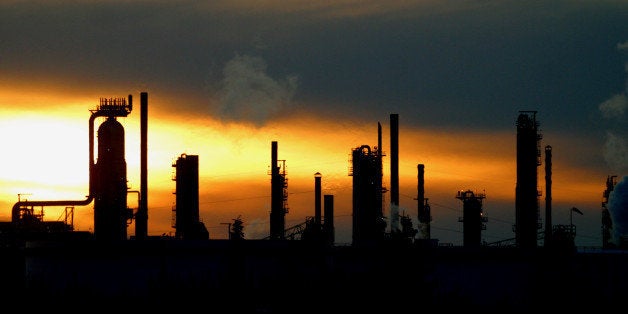
From the California drought to the Vanuatu typhoon, weather extremes are increasingly hard to ignore, and global warming is going to worsen our situation. Hence, climate engineering is the big temptation of our times: If there's too much heat on the planet, let's block some sunlight and continue business as usual. There's just one problem: It won't work. Fundamental physics tells us that the place where warming is greatest, in the Arctic, reflecting sunlight back into space has the smallest cooling effect. And it's the Arctic that is crucial for U.S. and European weather systems.
In order to counter global warming, several techniques to reflect sunlight back into space have been suggested. The only one that is simple and cheap enough to be seriously discussed at the moment was put forward by Paul Crutzen, awardee of the Nobel Prize for advancing our understanding of the stratospheric chemistry to the ozone layer. He suggested to inject tiny particles -- sulphate aerosols, to be specific -- into the stratosphere to shield Earth from a certain portion of solar radiation and hence cool the planet. Since then, whole research fields have developed around the idea. While industry and politicians seem to love it, from a physicist's perspective it is obvious that the method has a basic problem. In blunt terms: It cannot save us from climate change.
It's basic physics.
The reason is as simple as fundamental: The extra abundance of greenhouse gases in the atmosphere does not change our climate in a uniform manner. The Arctic, for example, is warming almost twice as much as the tropics. This has to do with a well-known effect called polar amplification. The main reason for this is that warming enhances the amount of water vapor in the atmosphere, which then snows-off in the dry and cold polar region where it releases energy and warms the atmosphere. Now, if this sounds too complicated, one just has to hold up a thermometer in the Arctic and another one in the tropics: They show that temperature up North rises faster than at the equator.
Now, reflecting sunlight back into space would have the exact opposite pattern. It would do a lot in the tropics where sunlight is strong, and less in the Arctic and Antarctic. This is fundamentally true and cannot be fixed. So, reflecting radiation back into space could cool the planet on average, but it cannot reverse the effect of the greenhouse gases -- not even remotely.
Although we use the global mean temperature as an indicator of man-made climate change, the change that we cause is, in fact, complex. Because of global warming, rainfall patterns all around the planet change in an inhomogeneous way. Some regions get wetter, others get dryer. Wind patterns are changing, weather extremes are likely to intensify. All of these phenomena have distinct patterns. And even though we do not yet fully understand these patterns, they are unique in the simple fact that they are caused by the additional abundance of greenhouse gases that humans are emitting into the atmosphere. Greenhouse gases yield a specific global fingerprint in all climatic phenomena. This fingerprint is unique because of the role that these gases play in the energy balance of our planet.
Anthropogenic greenhouse gases absorb the radiation from Earth's surface back into space and send part of it back to Earth. This mechanism is very different from just shining more sunlight down on us. If too much sunlight warming the planet was the real problem, then we might try to counter it by reflecting some of this sunlight back into space. But that is not the case.
Only one number.
To put it differently, Paul Crutzen's idea would give us a single knob to change Earth's climate. One knob that we could control: The amount of sulphate aerosols in the stratosphere. With one such "control parameter" one could control exactly one property of the climate system, for example, the global mean temperature or the temperature in China or the rainfall in the United States. But one could not control the rainfall in China and the temperature in the United States at the same time.
Since greenhouse gases in the troposphere change our climate differently in different places, one knob is not enough. It is physics that tells us clearly it won't work. The only thing that works is to undo what we have done -- so we have to reduce emissions of greenhouse gases and even try to remove some of them from the atmosphere.
If we don't want to screw up our climate, it is time to put the fruitless debates on climate-engineering techniques to rest, and focus on the only real solution, which is a tremendous challenge requiring all our intellectual resources: The mitigation of greenhouse gas emissions. The first place to address this challenge should be the place the emissions originated: our fossil-fuel-based energy systems.
